Time to get back to our story now, and find out more about my great-grandfather, Hermann Rudolph Lassig, who was best known in Bundaberg as a successful butcher (sorry to disappoint those who thought the title of this post meant he was a serial killer… Although really, that’s nothing to apologise for).
Hermann was born about 1863 (the exact date isn’t known) in the village of Gerswalde in north-east Germany.
His parents were Ferdinand Frederick William Lassig (1833-1891) and Wilhelmine Dorothea Jahnke (1833-1920). Ferdinand’s occupation is recorded as Landmann, which translates as ‘farmer’ or ‘peasant’.
In 1874, Ferdinand and Wilhelmina brought Hermann and his five brothers and sisters to Australia, arriving in Brisbane on the Herschel on 16 July of that year. The family moved to Maryborough, which is 110 km south of Bundaberg, but was founded 20 years earlier. They were among the first farmers on Island Plantation, and Ferdinand ran the local Baptist church.
At some point though, Hermann moved to the rapidly growing settlement of Bundaberg. We know this because it was there, on 20 June 1888, when he was around 25 years old, that he married Mary Ann Seeds.
Mary Ann, who turned 22 the very next day, was the daughter of English domestic servant Mary Ann Kingsman and Northern Irish sailor, pilot (the nautical kind) and deserter George Seeds.
She and Hermann settled in Gavan Street, North Bundaberg. Together, they had eight children, of whom six survived to adulthood, and one of which was my grandfather, Harold David Lassig.
It was also in North Bundaberg that Hermann started his career as a butcher. In February 1889, he and his brother William, who was eight twelve years younger, established a butcher shop called ‘Live & Let Live’.
They soon had branches across town, including one at the corner of George and Targo Streets, and others as far away as Mt Perry and Childers.
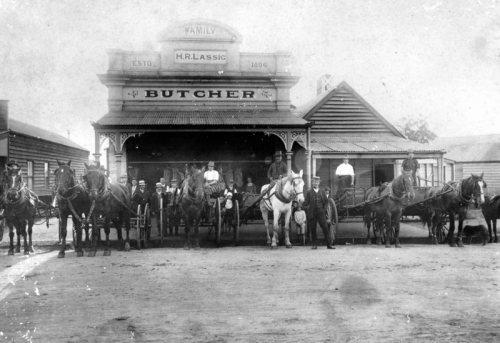
Delivery carts outside H.R. Lassig’s butcher shop in Childers, ca 1913 (Childers Historical Society, via Picture Bundaberg)
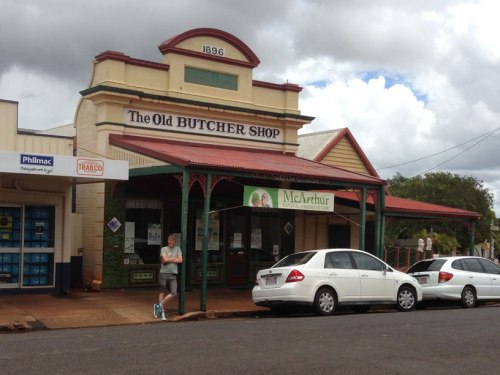
Yours truly outside the same shop in North St, Childers, ca 2012. Alas, it’s no longer in the family name, nor is it in the meat business anymore.
It appears to be on the strength of his butchery that Hermann became a successful local businessman, and he branched out into other ventures as well.
In 1920 he led a consortium that built the Olympia Airdome, an open-air picture theatre. In 1956 it was remodelled as the Olympia Theatre, then the Crest Cinema in 1973, the Moncrieff Theatre in 1986, and in 2011 the grander name of Moncrieff Entertainment Centre. Although it’s still pretty much a theatre.

Builders putting a roof on the Olympia Airdome, as seen from Buss Park (Lois Cottel, via Picture Bundaberg)
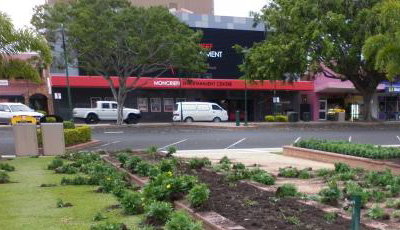
Today’s Moncrieff Entertainment Centre, also seen from Buss Park. This picture is taken from a report on vandals attacking the gardens, hence the damaged plants (Bundaberg Regional Council)
Screened at its opening night on 4 April 1920 was the Charlie Chaplin film Sunnyside, along with Borrowed Clothes, starring Mildred Harris (Charlie Chaplin’s wife), The Cry of the Weak, starring Fanny Ward, and A Fight for Millions, by William Duncan.
(As part of my aforementioned musical career, I played at both the closing of the Crest and the re-opening of the Moncrieff. I can report that the movies played on those occasions were respectively Children of a Lesser God and Star Trek IV – The Voyage Home. Only one of those won an Academy Award.)
At one point Hermann also owned the Jubilee Skating Rink in Bourbong St – surely a sensible investment in sub-tropical Queensland – and this was later sold to Doug Rattray, who in 1926 turned it into the Paramount Theatre (now defunct).
Hermann had many other business interests, including racehorses and gold mines, but of course he also owned farms.
It’s the farms that are most relevant to our investigation, so in my next post I’ll put aside theatres, ice skating rinks and gold mines, and look at what land he owned and when.

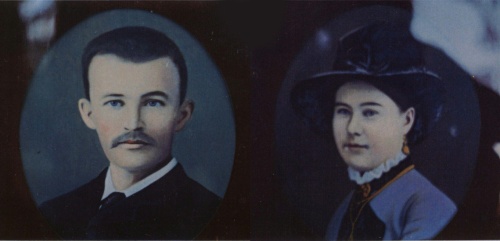
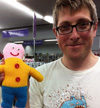

Hi Chris
Hermann Rudolph is also my great grandfather. Grandfather Arthur Rudolph (AKA Jack Steel), father Ralph Arthur. Small world! But I’ve never heard of you!
Brian Lassig
brian.lassig@austmus.gov.au
Great to hear from you! There are a surprising number of Lassigs around the country, but I reckon most of us are related as we’re all descended from either Hermann or William.